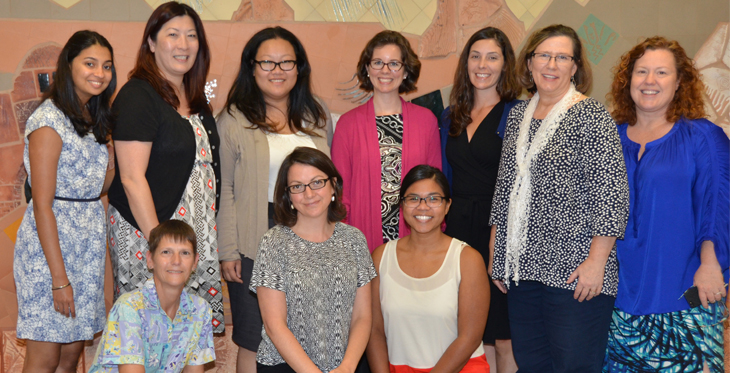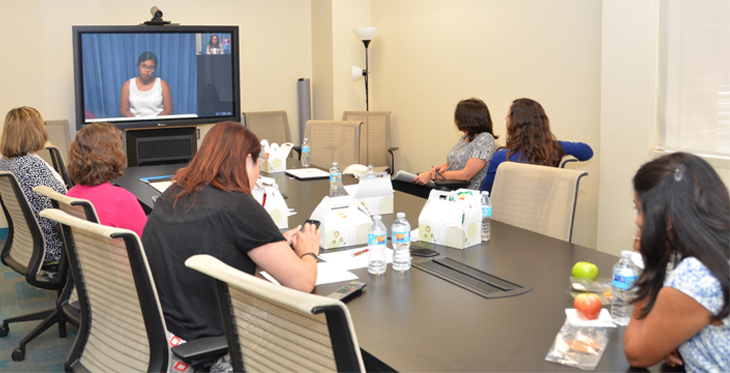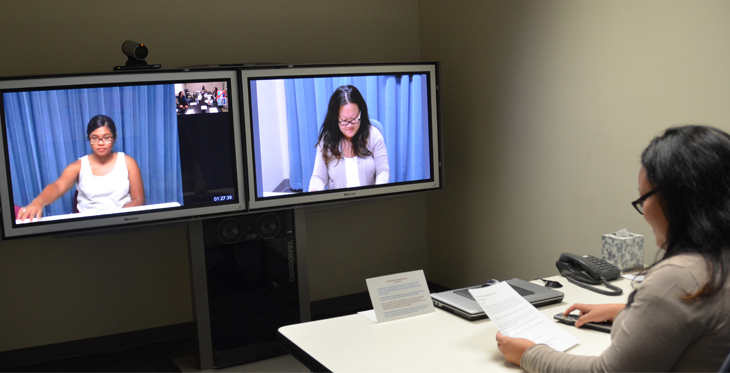The need for genetic counselors is immense as there simply are not enough to cover the number of patients requiring their services.
Sound familiar? Can you think of a solution? Telegenetics of course!
But as we all know, you can’t just jump into telemedicine without some degree of training. That’s where the Western States Genetic Services Collaborative (WSGSC) comes into play.
WSGSC is a HRSA-funded, multi-state project seeking to improve genetics and newborn screening services through sharing of resources across the region. The WSGSC includes Alaska, California, Guam, Hawaii, Idaho, Oregon, and Washington.
The Telegenetics Education and Training Program is a joint effort organized by the WSGSC and the Heartland Regional Genetics and Newborn Screening Collaborative. Working collaboratively with the Southwest Telehealth Resource Center (SWTRC) in Tucson, Arizona, and the South Central Telehealth Resource Center (SCTRC) in Little Rock, Arkansas, the Program seeks to train genetics providers, including genetic counselors and medical geneticists, in the use of telehealth in clinical genetics practice.

The WSGSC’s Project Director is Sylvia Mann, MS, CGC and Lori Dean, MS, CGC is the Project Manager of the Heartland Genetics and Newborn Screening collaborative.
The curriculum includes self-paced online sessions completed by the trainees prior to attending a two day in-person training course. Presentations review billing, licensing, and credentialing, and include hands-on didactic practice with telemedicine equipment. The first training session was held September 22-23, 2014, and the second session was recently completed on August 4-5, 2015. All participants receive continuing education credits at the completion of the training, and evaluation and comments have been very positive.
The neat thing about these training sessions is that they have been conducted simultaneously in Arizona and Arkansas using our respective telecommunications bridges. Lecturers at both sites provided lectures on a variety of topics jointly to both groups and attendees at both locations got to introduce themselves to each other and benefit from the broader array of experience levels the larger group afforded.
The most useful session, and perhaps the session that was the most fun, occurred on the second day after the didactic lectures and introduction to telemedicine equipment. The two groups split (in part due to the differing time zones) and engaged in a series of simulation exercises. At the SWTRC site we utilized the Arizona Telemedicine Program (ATP) facilities, which are ideally suited for this type of exercise. A set of case scenarios was created to simulate typical cases a genetic counselor would encounter. For each scenario, one attendee got to be the counselor, one got to be the patient and the rest were observers. The counselor was stationed in one of the ATP clinical rooms, the patient in another, and the rest of the group in a small conference room. They were all connected virtually.

The counselor had to start from scratch – enter the room, turn on the equipment, contact the patient, explain a little about the uniqueness of the telemedicine encounter, then proceed with a counseling session. The patient got to feel what it would be like for a real patient in a telemedicine encounter. The rest of the group “scored” the counselor on her performance. After all participants had been through each role, the group reconvened and discussed the experience and what they had learned.

Overall, attendees found the whole training experience quite valuable, and simply getting together with other counselors and sharing experiences they might have had to date was most gratifying and educational. Coming from so many different states with different degrees of telegenetics implementation and penetration into clinical practice yielded a host of different perspectives and useful tips.
One consistent comment was the belief that telegenetic counseling would not only be of great benefit to patients, but it would help the efficiency and efficacy of practices in general. Nearly every counselor noted how much time is wasted and how frustrating it is to travel to distant sites for counseling sessions just to have half or more of the patients not show up. Telemedicine to the rescue! Save time, see more patients, and reduce your carbon footprint.
Building on the success of these two pilot sessions, the SWTC and WSGSC will continue to develop more telegenetics materials and continue the training program. So if you are a genetic counselor or medical geneticist who is curious, self-motivated and loves (or wants to learn to love) technology, and have the desire to provide better care to patients who have limited access, contact the SWTRC or WSGSC to learn more about future training events and get an application. If accepted into the program, there is no cost to participate in the training.
Photos by Angelette Holtrust


